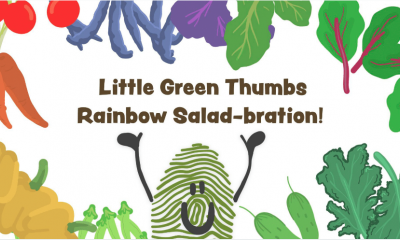
A simple activity to demonstrate the relationships between people and plants!
They’re the only living things that make their own food. Not only that, but they are the source of all food for every other living thing. What are they? Plants!
From Agriculture in the Classroom Oregon

The purpose of this lesson is to teach students that plants provide people with food, clothing, shelter, and many other things that we use in our daily lives. Everything we eat and most of the things we use in our daily lives come directly or indirectly from plants. In addition to growing plants that we eat every day, farmers and ranchers grow plants that produce material we need, like fiber for clothing and wood for paper, pencils, and the homes we live in.
This lesson is from the California Foundation for Agriculture in the Classroom and so there is mention of some United States history. The essence of the lesson is well suited for using in any location. This lesson is part of a series called, Edible Plant Parts. These lessons allow students and teachers to examine the six basic plant parts—roots, stems, leaves, flowers, fruits, and seeds—in a unique way. Through hands-on activities, students will learn about the different plant parts, as well as how to include fruits and vegetables into their daily meals as part of a healthy diet. Students will also learn about agriculture and the people who produce our food.

Nature presents an incredible visual rainbow. For centuries, people have captured these natural hues for decorating animal skins, fabrics, crafts, hair, and bodies. Dyeing with plants can provide an intriguing lens for exploring the local environment, learning science concepts, conducting experiments, learning about history and other cultures, and creating compelling crafts.
Students will investigate the use of plants to create natural dyes, experimenting with different dyeingmethods and a variety of plant materials.
Background: Since prehistoric times, humans from across the globe have used plant pigments to enrich their lives. Historians and scientists believe that prehistoric animal skins and cave paintings dating back to 15,000 B.C. were dyed with plant pigments. They’ve discovered examples of early dyed fibers in Egypt dating to around 2000 B.C., and Chinese records revealing even earlier use of plants as fabric dyes. Ancient Britons, called Picts, used a plant called woad to dye their bodies blue and frighten enemies in battle, while the British “red coats” who marched against the Ameri- cans in Revolutionary War times wore uniforms colored with dye made from the roots of the madder plant.
Most plant parts have a mixture of pigments, which is why dyes made from plants tend to appear more subtle and muted—less “pure”—than the synthetic dyes that are now used to color our world. However, the “earth tones” of plant dyes continue to intrigue many hobby and craft dyers because the rich hues of Mother Nature all seem to “go together.”



